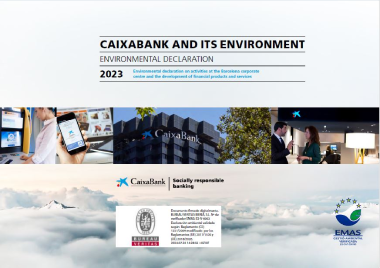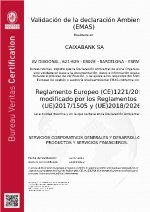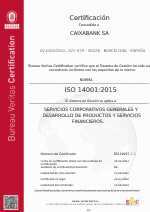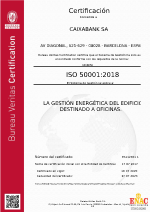 Caixabank (Go to Home)
Caixabank (Go to Home)Environmental management
Our commitment
At CaixaBank we protect the environment when we are performing our activities. We implement the best environmental and energy practices in accordance with our Sustainability Principles .
After successfully completing the Environmental Management Plan 2022-2024 , we continue furthering our commitment through the Environmental Management Plan 2025-2027 , which focuses on mitigating the environmental impact of the Group's activities. This plan measures our impact by calculating the carbon footprint and prioritises its reduction through six lines of action:
|
1. Climate change |
Purchase of 100% renewable energy (to distributor +PPA). Implementation of carbon's internal price. |
|
2. Environmentally-friendly procurement and contracting |
Engagement with suppliers to calculate the carbon footprint and reduction targets. Maintenance and extension of the Environmental Plan for Procurement and Contracts. |
|
3. Commitment to circular economy |
ReÚtilizame Project of donations to extend the useful life of materials (IT equipment, furniture, etc.). Project for the reuse of the plastic from obsolete bank cards. |
|
4. Sustainable Mobility Plan |
Reduction of the fleet of corporate vehicles. Extension of the electric vehicle charging points and carsharing vehicles. Awareness actions aimed at reducing emissions associated with corporate travel. |
|
5. Promotion of efficiency |
Replacement of HVAC equipment. Energy efficiency measures, such as the installation of home automation systems in branches, the installation of LED lighting, new, more efficient climate control equipment, and other best practices such as timed regulations and setpoint temperature adjustments, among others. Reduction of consumption thanks to the progress of digitisation projects, such as saving paper, toner and bank cards, among others. Analysis to change the documentary management model. |
|
6. Renewal of voluntary certifications and extension of the scope |
Extension of the scope of the ISO 14001 certification. Extension of the events qualified as sustainable. |
In order to meet our reduction target, we have adopted our own strategy tailored to the operational needs. This strategy's approach enables us to manage our own emissions and is aligned with the impacts identified in the Double Materiality Study.
The targets set by 2030 are the following:
|
Planes de actuación |
Objetivos2 |
2025 |
2026 |
2027 |
2030 |
||||
|---|---|---|---|---|---|---|---|---|---|
|
|
|
CaixaBank S.A. |
Grupo CaixaBank |
CaixaBank S.A. |
Grupo CaixaBank |
CaixaBank S.A. |
Grupo CaixaBank |
CaixaBank S.A. |
Grupo CaixaBank |
|
Estrategia de mitigación de huella de carbono
|
Reducción de las Emisiones Alcance 1 (Tn CO2) |
-9% |
-4% |
-12% |
-6% |
-16% |
-7% |
-22% |
-10% |
|
Emisiones Alcance 2 (Market Method) (Tn CO2) |
0 |
0 |
0 |
0 |
0 |
0 |
0 |
0 |
|
|
Reducción de las Emisiones Alcance 2 (Location Method) (Tn CO2) |
-5% |
-4% |
-8% |
-6% |
-10% |
-7,5% |
-15% |
-11% |
|
|
Reducción de las Emisiones Alcances 1+2 (Market Method) (Tn CO2) |
-9% |
-4% |
-12% |
-6% |
-16% |
-7% |
-22% |
-10% |
|
|
Reducción de las Emisiones Alcances 1+2 (Location Method) (Tn CO2) |
-6% |
-4% |
-9% |
-6% |
-11% |
-7,5% |
-16% |
-11% |
|
|
Compensación huella de carbono - Alcances 1, 2 y 3.6 (viajes corporativos) |
100% |
100% |
100% |
100% |
100% |
100% |
100% |
100% |
|
|
Consumo de energía de origen renovable (kWh) |
100% |
100% |
100% |
100% |
100% |
100% |
100% |
100% |
|
|
Promoción de la eficiencia |
Ahorro energía eléctrica consumida (kWh) |
-5% |
-4% |
-8% |
-6% |
-10% |
-7,5% |
-15% |
-11% |
1. CaixaBank has set emission reduction targets for Scope 1 and 2, following the same perimeter as the one reported for these scopes in the Group's Operational Carbon Footprint. Therefore, 100% of the Scope 1 and 2 emissions are covered by the decarbonisation targets. For the base year 2024, Scope 1 and Scope 1+2 emissions from CaixaBank, S.A. accounted for 1.7% of the company’s total emissions in that year, while for the CaixaBank Group they accounted for 2.2% of the Group’s emissions in that same year, with Scope 2 emissions being 0% in both cases.
2. The Sustainability Committee is responsible for monitoring the targets set in relation to the operational footprint.
Management of climate change
Financial institutions have a key role to play in achieving the objectives of the Paris Agreements and the Sustainable Development Goals (SDGs). With this in mind, at CaixaBank we approved the Statement on Climate Change in February 2019, the aim of which is to contribute to the transition towards a low-carbon and socially-just economy, as well as to promote sustainable development and economic growth.
One of the main lines of action of the Statement on Climate Change is to reduce our activity's CO2 emissions and offset those emissions that cannot be avoided in accordance with our Carbon Neutral Plan.
Carbon Neutral Strategy
The Entity's strategy geared towards achieving neutrality of emissions is based on their measurement, their reduction and offsetting those that cannot be avoided.

01. Calculation of our operational carbon footprint

![]()
02. Reduction of CO2 emissions


03. Offsetting of unavoidable emissions
01. Calculation of the operational carbon footprint
At CaixaBank, S.A. we conduct an annual inventory of the greenhouse emissions (GHG) generated as a result of our corporate activity to calculate the carbon footprint and establish actions aimed at gradually reducing it.
In 2022, the Group performed a materiality analysis with the goal of determining the relevance of indirect GHG emissions categories (Scope 3), in order to determine the operational limits to be included in the Group's carbon footprint in the forthcoming years. The scope of the materiality analysis comprised 16 Group companies representing 99.4% of CaixaBank Group employees. The analysis shows that the sole relevant category in this scope, with a weight of 99% of total Scope 3 emissions, is category 3.15, which corresponds to financed emissions.
However, the following categories were also defined as material, taking into account both their associated emissions volume and the possibilities to influence their control and reduction.
- 3.1 Purchased goods and services
- 3.2 Purchased capital goods
- 3.3 Fuel and energy-related activities
- 3.6 Corporate travel
On the basis of the conclusions of the materiality analysis, a new perimeter was defined for calculating the operational carbon footprint that includes all the emissions of the categories defined as material for the entire Group. The results of this calculation are presented in the following table:
CaixaBank Group operational carbon footprint (TCO2EQ)
| Item |
Source |
CaixaBank S.A. | Grupo CaixaBank | ||
|---|---|---|---|---|---|
| Scope 1 | Combustion in fixed sources | Boilers or emergency equipment | Gas oil C | 346.6 | |
| Natural gas | 612.9 | ||||
| Propane gas | 2.5 | 2.5 | |||
| Combustion in mobile sources | Rental vehicles | 210.8 | 3,808.2 | ||
| Cooling gas leaks | Cooling gases | 2,159.0 | 2,511.9 | ||
| Scope 2 | Market-based method | — | — | ||
| Location-based method | 16,392.9 | 23,046.8 | |||
| Electricity self-consumption | — | — | |||
| Scope 3 | 3.1 Purchase of goods and services | OPEX | 122,702.8 | 236,247.6 | |
| 3.2 Capital goods | CAPEX | 52,414.5 | 72,699.6 | ||
| 3.3 Fuel and activities | Electricity and fuel value chain and transmission |
3,177.3 | 5,117.5 | ||
| 3.6 Travel | Aeroplane, train, cars and hotels | 9,837.3 | 12,454.1 | ||
| Total (Current Perimeter) | Scope 1 | 3,192.9 | 7,282.2 | ||
| Scope 2 (Market-based) |
— | — | |||
| Scope 2 (Location-based) | 16,392.9 | 23,046.8 | |||
| Scope 3 | 188,131.9 | 326,518.8 | |||
| Total (Market-based) | 191,324.8 | 333,800.9 | |||
| Total (Location-based) | 207,717.6 | 356,847.7 | |||
| Total per employee (Market-based) | 5.2 | 7.4 | |||
* The Operational Carbon Footprint data presented in the 2021 Consolidated Management Report included the sum of the historical calculation perimeters of CaixaBank and Bankia, which were not the same. This data has been recalculated with respect to the publication of the 2021 Consolidated Management Report in order to unify this perimeter and to be able to compare emissions in subsequent years, as well as the achievement of the targets set.
1 The calculation of Scope 3 for the old perimeter is only calculated for CaixaBank, S.A.
CaixaBank Group operational carbon footprint (TCO2EQ)
| Item | Source | CaixaBank S.A. |
CaixaBank Group |
||
|---|---|---|---|---|---|
| Scope 1 | Combustion in fixed sources | Boilers or emergency equipment | Gas oil C | 290.82 | 467.92 |
| Natural gas | 621.62 | 654.55 | |||
| Propane gas | 3.56 | 3.56 | |||
| Combustion in mobile sources | Rental vehicles | 395.90 | 3,858.33 | ||
| Cooling gas leaks | Cooling gases | 3,376.72 | 3,438.98 | ||
| Scope 2 | Market-based method | — | — | ||
| Location-based method | 21,082.12 | 29,383.94 | |||
| Electricity self-consumption | — | — | |||
| Scope 3 | 3.1 Purchase of goods and services | OPEX | 63,566.73 | 158,000.89 | |
| 3.2 Capital goods | CAPEX | 43,338.53 | 46,755.71 | ||
| 3.3 Fuel and activities | Electricity and fuel value chain and transmission |
3,996.56 | 6,142.58 | ||
| 3.6 Travel | Aeroplane, train, cars and hotels | 9,006.43 | 10,964.72 | ||
| Total (Current Perimeter) | Scope 1 | 4,688.62 | 8,423.34 | ||
| Scope 2 (Market-based) |
— | — | |||
| Scope 2 (Location-based) | 21,082.12 | 29,383.94 | |||
| Scope 3 | 119,908.25 | 221,863.91 | |||
| Total (Market-based) | 124,596.86 | 230,287.25 | |||
| Total (Location-based) | 145,678.98 | 259,671.20 | |||
| Total per employee (Market-based) | 3.45 | 5.18 | |||
| Scope 3 (Former Perimeter)1 |
3.1 Purchase of goods and services | Mains water | 162.38 | 162.38 | |
| A4 paper | 1,649.59 | 1,649.59 | |||
| Other paper | 2,346.78 | 2,346.78 | |||
| Other goods (toner, vinyl and cards) | 575.03 | 575.03 | |||
| 3.2 Capital goods | Towers, laptops, monitors and keyboards | 979.45 | 979.45 | ||
| 3.3 Fuel and activities | Value chain and transmission of nonrenewable electricity | 0.00 | 0.00 | ||
| 3.4 Waste generation | Toner and IT support | 1,436.76 | 1,436.76 | ||
| 3.5 Corporate travel | Aeroplane, train, cars | 8,826.88 | 8,826.88 | ||
| Total (Former Perimeter) | Scope 1 | 4,688.62 | 8,423.34 | ||
| Scope 2 (Market-based) | — | — | |||
| Scope 2 (Location-based) | 21,082.12 | 29,383.94 | |||
| Scope 3 | 15,976.88 | 15,976.88 | |||
| Total (Market-based) | 20,665.49 | 24,400.22 | |||
| Total (Location-based) | 41,747.61 | 53,784.16 | |||
| Total per employee (Market-based) | 0.57 | 0.55 | |||
* The Operational Carbon Footprint data presented in the 2021 Consolidated Management Report included the sum of the historical calculation perimeters of CaixaBank and Bankia, which were not the same. This data has been recalculated with respect to the publication of the 2021Consolidated Management Report in order to unify this perimeter and to be able to compare emissions in 2021, 2022 and 2023, as well as the achievement of the targets set.
1 The calculation of Scope 3 for the old perimeter is only calculated for CaixaBank, S.A.
CaixaBank Group operational carbon footprint (TCO2EQ)
| Item | Source | CaixaBank S.A. | CaixaBank Group | ||
|---|---|---|---|---|---|
| Scope 1 | Combustion in fixed sources | Boilers or emergency equipment | Gas oil C | 326.46 | 415.48 |
| Natural gas | 791.13 | 892.75 | |||
| Propane gas | |||||
| Combustion in mobile sources | Rental vehicles | 960.40 | 4,161.52 | ||
| Cooling gas leaks | Cooling gases | 3,548.13 | 4,106.54 | ||
| Scope 2 | Market-based method | — | — | ||
| Location-based method | 31,994.66 | 42,670.71 | |||
| Electricity self-consumption | — | — | |||
| Scope 3 | 3.1 Purchase of goods and services | OPEX | 51,980.66 | 128,005.67 | |
| 3.2 Capital goods | CAPEX | 50,164.90 | 60,810.78 | ||
| 3.3 Fuel and activities | Electricity and fuel value chain and transmission | 4,584.67 | 6,715.65 | ||
| 3.6 Travel | Aeroplane, train, cars and hotels | 5,809.91 | 6,794.80 | ||
| Total (Current Perimeter) | Scope 1 | 5,626.12 | 9,576.29 | ||
| Scope 2 (Market-based) |
— | — | |||
| Scope 2 (Location-based) | 31,994.66 | 42,670.71 | |||
| Scope 3 | 112,540.14 | 202,326.90 | |||
| Total (Market-based) | 118,166.26 | 211,903.19 | |||
| Total (Location-based) | 150,160.92 | 254,573.90 | |||
| Total per employee (Market-based) | 3.22 | 4.80 | |||
| Scope 3 (Former Perimeter)1 |
3.1 Purchase of goods and services | Mains water | 153.31 | 153.31 | |
| A4 paper | 2,054.94 | 2,054.94 | |||
| Other paper | 3,489.20 | 3,489.20 | |||
| Other goods (toner, vinyl and cards) | 647.63 | 647.63 | |||
| 3.2 Capital goods | Towers, laptops, monitors and keyboards | 1,440.47 | 1,440.47 | ||
| 3.3 Fuel and activities | Value chain and transmission of nonrenewable electricity | — | — | ||
| 3.4 Waste generation | Toner and IT support | 1,783.20 | 1,783.20 | ||
| 3.5 Corporate travel | Aeroplane, train, cars | 5,689.98 | 5,689.98 | ||
| Total (Former Perimeter) | Scope 1 | 5,626.12 | 9,576.29 | ||
| Scope 2 (Market-based) | — | — | |||
| Scope 2 (Location-based) | 31,994.66 | 42,670.71 | |||
| Scope 3 | 15,258.72 | 15,258.72 | |||
| Total (Market-based) | 20,884.84 | 24,835.02 | |||
| Total (Location-based) | 52,879.50 | 67,505.72 | |||
| Total per employee (Market-based) | 0.57 | 0.56 | |||
* * The Operational Carbon Footprint data presented in the 2021 Consolidated Management Report included the sum of the historical calculation perimeters of CaixaBank and Bankia, which were not the same. This data has been recalculated with respect to the publication of the 2021Consolidated Management Report in order to unify this perimeter and to be able to compare emissions in 2021, 2022 and 2023, as well as the achievement of the targets set.
1 The calculation of Scope 3 for the old perimeter is only calculated for CaixaBank, S.A.
CaixaBank Group operational carbon footprint (TCO2EQ)
| Item | Source | CaixaBank S.A. | CaixaBank Group | ||
|---|---|---|---|---|---|
| Scope 1 | Combustion in fixed sources | Boilers or emergency equipment | Gas oil C | 682.61 | 817.43 |
| Natural gas | 970.07 | 1,017.72 | |||
| Propane gas | |||||
| Combustion in mobile sources | Rental vehicles | 1,291.95 | 4,096.07 | ||
| Cooling gas leaks | Cooling gases | 2,818.00 | 3,326.17 | ||
| Scope 2 | Market-based method | 374.17 | 1,153.55 | ||
| Location-based method | 32,784.12 | 43,978.80 | |||
| Electricity self-consumption | — | — | |||
| Scope 3 | 3.1 Purchase of goods and services | OPEX | 59,185.22 | 146,723.85 | |
| 3.2 Capital goods | CAPEX | 36,448.54 | 45,841.97 | ||
| 3.3 Fuel and activities | Electricity and fuel value chain and transmission | 6,358.27 | 8,829.47 | ||
| 3.6 Travel | Aeroplane, train, cars and hotels | 4,473.40 | 5,038.83 | ||
| Total (Current Perimeter) | Scope 1 | 5,762.63 | 9,257.38 | ||
| Scope 2 (Market-based) | 374.17 | 1,153.55 | |||
| Scope 2 (Location-based) | 32,784.12 | 43,978.80 | |||
| Scope 3 | 106,465.44 | 206,434.11 | |||
| Total (Market-based) | 112,602.24 | 216,845.05 | |||
| Total (Location-based) | 145,012.20 | 259,670.30 | |||
| Total per employee (Market-based) | 2.64 | 4.37 | |||
| Scope 3 (Former Perimeter)1 |
3.1 Purchase of goods and services | Mains water | 195.14 | 195.14 | |
| A4 paper | 3,105.14 | 3,105.14 | |||
| Other paper | 4,126.67 | 4,126.67 | |||
| Other goods (toner, vinyl and cards) | 824.34 | 824.34 | |||
| 3.2 Capital goods | Towers, laptops, monitors and keyboards | 3,946.41 | 3,946.41 | ||
| 3.3 Fuel and activities | Value chain and transmission of nonrenewable electricity | 122.64 | 122.64 | ||
| 3.4 Waste generation | Toner and IT support | 1,359.62 | 1,359.62 | ||
| 3.5 Corporate travel | Aeroplane, train, cars | 4,094.93 | 4,094.93 | ||
| Total (Former Perimeter) | Scope 1 | 5,762.63 | 9,257.38 | ||
| Scope 2 (Market-based) | 374.17 | 1,153.55 | |||
| Scope 2 (Location-based) | 32,784.12 | 43,978.80 | |||
| Scope 3 | 17,774.90 | 17,774.90 | |||
| Total (Market-based) | 23,911.70 | 28,185.83 | |||
| Total (Location-based) | 56,321.65 | 71,011.08 | |||
| Total per employee (Market-based) | 0.56 | 0.57 | |||
* The Operational Carbon Footprint data presented in the 2021 Consolidated Management Report included the sum of the historical calculation perimeters of CaixaBank and Bankia, which were not the same. This data has been recalculated with respect to the publication of the 2021Consolidated Management Report in order to unify this perimeter and to be able to compare emissions in 2021, 2022 and 2023, as well as the achievement of the targets set.
1 The calculation of Scope 3 for the old perimeter is only calculated for CaixaBank, S.A.
One of the milestones reached is the certification through Guarantees of Renewable Origin of all the energy consumed by the Group, thus meeting the ZERO EMISSIONS target in Scope 2.
At the CaixaBank Group we have reduced our carbon footprint (Scopes 1 and 2) by 30% since 2021.
We calculate our carbon footprint according to the "The Greenhouse Gas Protocol" and "Corporate Value Chain (Scope 3) accounting and reporting standard". The data are verified annually in the context of the Consolidated Non-Financial Information Statement and Sustainability Report.
Executive Report CaixaBank Carbon Footprint 2024: old perimeter
Executive Report CaixaBank Carbon Footprint 2024: current perimeter
02. Reductions of CO2 emissions
With the aim of helping to reduce the Group's Carbon Footprint emissions, several initiatives have been implemented along the following lines:
03. Offsetting CO2 emissions
Since 2018, CaixaBank offsets all of the CO2 emissions from its activities. This means the offsetting objective includes the emissions associated with corporate centres and the entire branch network, which is the largest in the financial sector in Spain. We currently offset our emissions from Scope 1, 2 and 3.6 (corporate travel) at the CaixaBank Group scale.
In 2024, a qualitative leap was made regarding the offsetting of these emissions, since 100% of the offset projects focused on GHG emissions removal, compared to previous years when both emission reduction and removal projects were considered. The projects chosen to offset 2024 emissions were:
- 50% of the tonnes offset were compensated through the Reforestation Project in the Community of Montes Vecinales en Mano Común de Couso in the Municipality of Avión, located in Ourense (Galicia), verified under the MITECO Verification Standard. Vintage 2023
- 40% of the tonnes offset were compensated through the Forest Project in Montes del Este, located in Uruguay, verified under the VCS (Verified Carbon Standard). Vintage 2019
- 10% of the tonnes offset were compensated through the Forest Project in Quintana Roo, located in Mexico, verified under the CAR (Climate Action Reserve) Standard. Vintage 2022+
Additionally, among the projects funded through carbon credits, CaixaBank has two of its own CO2 absorption projects, which consist of reforesting areas burned by fire in the Montserrat mountains in Barcelona and in the town of Ejulve in Teruel, which it has promoted, financed and managed.
Both projects are included in the Register of carbon footprints, offsetting and carbon dioxide absorption projects validated by MITECO. To manage the permanence risk, the Ministry reserves a portion of the absorptions allocated to the guarantee fund. The emissions absorbed by this forest were calculated following the methodology established by the Climate Change Office of MITECO.
Membership and Certifications
We register our carbon footprint with the Ministry for the Ecological Transition and the Demographic Challenge's Register of carbon footprints, offsetting and carbon dioxide absorption projects, and we have signed up to the Voluntary Agreements Programme for the reduction of greenhouse gas (GHG) emissions run by the Catalan Office for Climate Change (OCCC).
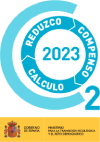
Register of carbon footprints (MTE)

Voluntary Agreements Programme of Generalitat de Catalunya
Environmental and energy management system
At CaixaBank, we have implemented an environmental and energy management system as a tool to structure our management and reduce the environmental impact of our activities, ensuring a process of continuous improvement.
CaixaBank, S.A. has 5 ISO 14001 certified buildings, 2 ISO 50001 certified buildings and 1 building certified under the EMAs Regulation, as well as the Environmental Quality Mark in all the branches of the network in Catalonia. 64% of the workforce in Headquarters do so in ISO 14001 certified buildings. CaixaBank aims to increase this figure to 70% in 2025.
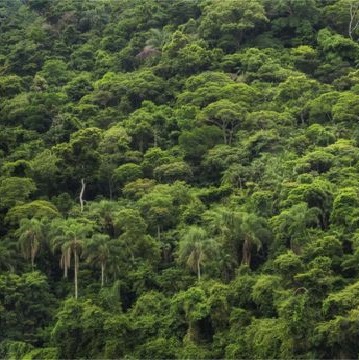

ENVIRONMENTAL AND ENERGY MANAGEMENT SYSTEM
CONTEXT
- Internal and external context
- Expectations of stakeholders
Plan
Establish processes and objectives
Act
Take steps for
on-going
improvement
Do
Implement processes
Verify
Assess performance
ENVISAGED RESULTS
CONTEXT
- Internal and external context
- Expectations of stakeholders
ENVISAGED RESULTS
Plan
Establish processes and objectives
Act
Take steps for
on-going
improvement


ENVIRONMENTAL AND ENERGY MANAGEMENT SYSTEM
Do
Implement processes
Verify
Assess performance
Principles
Sustainability Principles
Declaration on climate change
External certifications
EMAS regulation
ISO 14001
ISO 50001
Supervision
Enviromental Risk Management Committee
Corporate Responsibility and Reputation Committee
